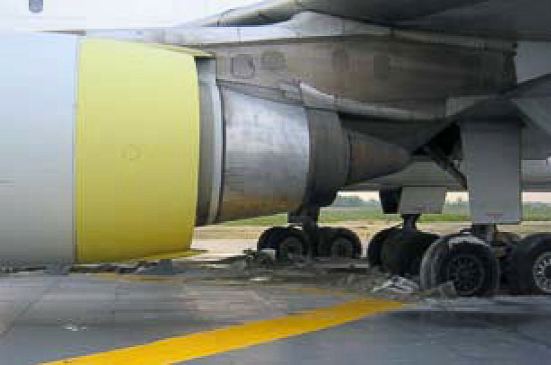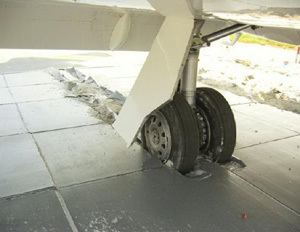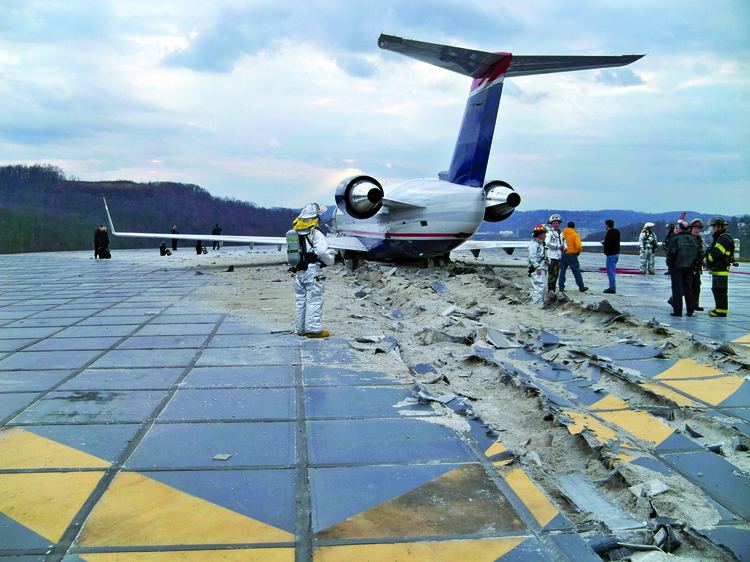 | ||
An engineered materials arrestor system, engineered materials arresting system (EMAS), or arrester bed is a bed of engineered materials built at the end of a runway. Engineered materials are defined in FAA Advisory Circular No 150/5220-22A as "high energy absorbing materials of selected strength, which will reliably and predictably crush under the weight of an aircraft". While the current technology involves lightweight, crushable concrete blocks, there is no regulatory requirement that this material be used for EMAS. The purpose of an EMAS is to stop an aircraft overrun with no human injury and minimal aircraft damage. The aircraft is slowed by the loss of energy required to crush the EMAS material. An EMAS is similar in concept to the runaway truck ramp made of gravel or sand. It is intended to stop an aircraft that has overshot a runway when there is an insufficient free space for a standard runway safety area (RSA). Multiple patents have been issued on the construction and design on the materials and process.
Contents

FAA Advisory Circular 150/5220 explains that an EMAS may not be effective for incidents involving aircraft of less than 25,000 pounds weight. It also clarifies that an EMAS is not the same as a stopway, which is defined in FAA Advisory Circular 150/5300-13A, Section 312.

United States installations
The FAA's design criteria for new airports designate Runway Safety Areas (RSA), to increase the margin of safety if an overrun occurs, and to provide additional access room for response vehicles. A United States federal law requires that the length of RSA in airports is to be 1,000 feet (300 m) by the end of 2015 in a response to a runway overrun into a highway at Teterboro Airport in New Jersey. At airports built before these standards were put into effect, the FAA has begun funding the installation of EMAS at the ends of the main runways. As of July 2014, 47 United States airports had been so equipped; the plan was to have 62 airports so equipped by the end of 2015. The minimum recommended overall length of an EMAS installation is 600 feet (180 m), of which at least 400 feet (120 m) is to consist of the frangible material.
As of August 2015, over 100 EMAS have been installed.
Approved manufacturers
As of October 2014, there were two manufacturers of EMAS products that meet the FAA requirements of advisory circular 150-5220-22B, “Engineered Materials Arresting Systems for Aircraft Overruns.” The FAA must review and approve each EMAS installation .
Runway Safe EMAS is a foamed silica bed made from recycled glass and is contained within a high-strength plastic mesh system anchored to the pavement at the end of the runway. The foamed silica is poured into lanes bounded by the mesh and covered with a poured cement layer and treated with a top coat of sealant.
There is a third manufacturer, certified by the Chinese CAAC with a product that is very similar to the original one of Zodiac ESCO.
Incidents
On 20 August 2014, the FAA issued a summary citing nine incidents of aircraft stopped by EMAS, involving a total of 243 passengers and crew:
In addition, the following incidents have been described in other news outlets:
